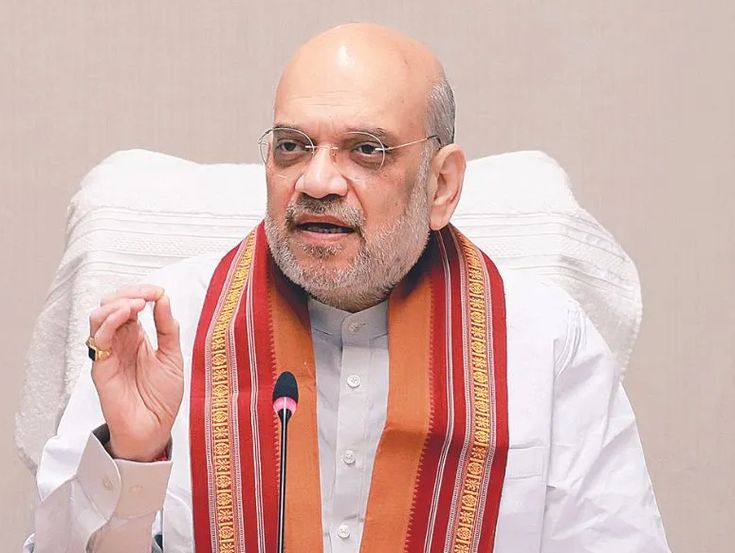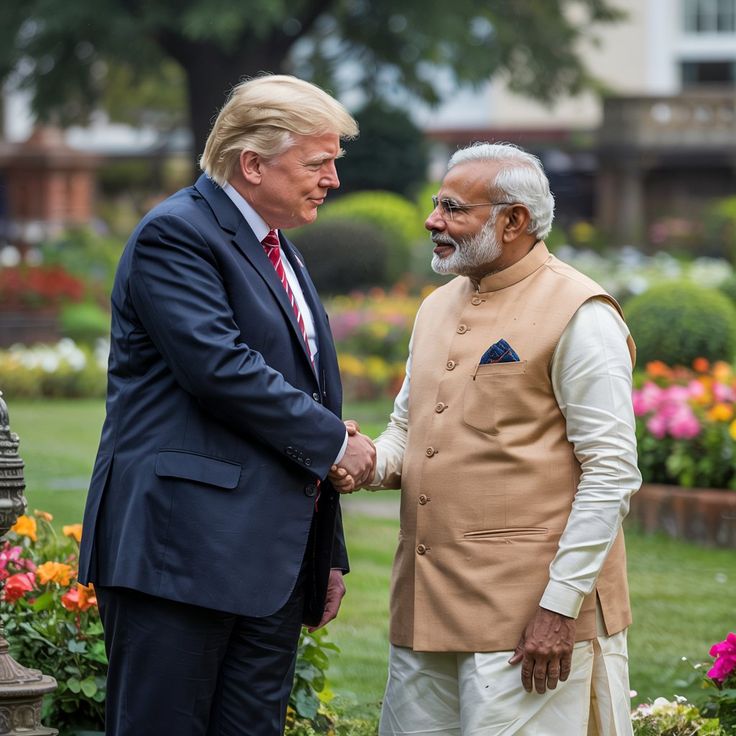India’s cooperation with the United States has grown deeper over the last two decades, spanning areas such as defense, technology, energy security, and counterterrorism. But while strategic and defense ties have seen remarkable momentum, the trade relationship has often been weighed down by disputes over tariffs, market access, and regulatory barriers. Now, in a significant statement, Union Home Minister Amit Shah has suggested that clarity regarding a long-anticipated India-US trade deal could come “within weeks,” sparking optimism among business communities and policy watchers.
Background: The Importance of India-US Trade Ties
Trade between India and the United States has surged substantially in recent years, making America India’s largest trading partner in goods and services. As per official data, bilateral trade touched nearly $200 billion in 2022–23, and efforts are ongoing from both sides to push the figure well beyond that.
For India, the US represents a vital export market for services such as IT, pharmaceuticals, textiles, and agricultural products, while also being a crucial source of foreign direct investment (FDI) and advanced technology. For the US, India is both a rapidly growing consumer base and a partner seen as central to diversifying supply chains away from China.
Yet, despite the growing trade volume, differences persist. Disputes range from India’s protective tariffs on certain goods—especially agricultural and dairy imports—to US concerns about intellectual property rights and market access for its companies. The suspension of India’s preferential market access under the Generalized System of Preferences (GSP) by Washington in 2019 was a symbolic setback in otherwise friendly ties. Since then, discussions have continued intermittently, but a comprehensive deal has remained elusive.
Amit Shah’s Statement: Significance and Timing
Speaking at a high-profile business forum in New Delhi, Amit Shah’s remarks about resolution “within weeks” carried significant weight. While Mr. Shah, as Home Minister, does not directly oversee international trade negotiations—which fall under the Commerce Ministry—his authoritative presence in the government and proximity to the Prime Minister makes the statement more than symbolic.
Shah’s prediction suggests that backchannel discussions or formal rounds of negotiations between New Delhi and Washington may have made headway behind the scenes. His statement could also be interpreted as a signal meant to reassure both domestic businesses and international partners that India is committed to deepening trade integration at a time when geopolitical alignments are undergoing rapid shifts.
Why Now? The Global and Political Context
Two major contexts underlie the urgency.
Geopolitical Economy Shift: With China-US trade ties firmly entrenched in hostility and Europe facing a prolonged period of economic sluggishness due to energy volatility and the Russia-Ukraine conflict, India stands out as a fast-growing democracy with significant market potential. For Washington, securing a trade deal with India strengthens its Indo-Pacific strategy. For New Delhi, ensuring US market access helps fuel its ambitious “Make in India” and “Export-Led Growth” policies.
Election Cycles and Political Signals: Both countries have been through election-heavy political phases. In India, key state elections are looming before the national general elections scheduled for 2029, while in the US the run-up to the 2026 midterm elections has begun to sharpen domestic economic debates. A breakthrough trade deal—even a limited one—could be projected politically in both capitals as an example of “delivery on international partnerships.”
Potential Features of the Trade Deal
While official documentation of the trade negotiations is mostly classified or undisclosed, analysts suggest the upcoming deal might focus on a limited or phased approach rather than a sweeping free trade agreement (FTA).
Points likely under consideration include:
Tariff Reductions: India may agree to lower or rationalize import tariffs in select categories such as certain industrial products, while the US could ease duties on Indian exports like steel and aluminum.
Market Access for Agriculture: Discussions on dairy products, almonds, and apples remain contentious, but partial concessions may be on the table to strike a balance.
Pharmaceuticals and Healthcare Products: India is a major supplier of generic medicines to the United States. Ensuring smoother regulatory clearances by the US Food and Drug Administration (FDA) could become part of the pact.
Digital Trade and Technology Cooperation: With India firming up its data protection and digital infrastructure frameworks, there may be provisions related to cross-border data flows or cooperation on emerging technologies.
Restoration of GSP: Washington could consider restoring India’s eligibility under the GSP, at least partially, as a goodwill gesture.
Such incremental agreements are more practical in today’s environment, given the complexities of negotiating a comprehensive FTA, which could take many years.
Reactions from the Business Community
Following Shah’s remarks, several leading industry bodies including CII (Confederation of Indian Industry) and FICCI (Federation of Indian Chambers of Commerce and Industry) welcomed the optimism. Business leaders said clarity on the trade deal could boost investor confidence and help stabilize supply chains, especially for sectors like IT services and manufacturing.
An IT entrepreneur from Bengaluru commented that companies were eagerly awaiting eased restrictions on services exports. “The US is our biggest client in outsourcing. If the new deal provides smoother visa frameworks for professionals or reduced taxation barriers, it will have a direct multiplier effect on our economy,” he said.
On the American side, the US-India Business Council (USIBC) also hailed the momentum. In their statement, they noted that India is already one of the world’s fastest growing economies, and its 1.4 billion-strong market represents an unparalleled growth opportunity.
Skepticism and Caution
Despite optimism, analysts are cautious. Previous trade negotiations between India and the US have frequently hit dead ends at the last stage because of uncompromising positions. Issues like protection of local farmers, concerns over cheap imports, and political sensitivities around food security in India make agricultural concessions particularly difficult.
Similarly, US stakeholders often press for more stringent intellectual property protections in pharmaceuticals, agriculture, and software—demands that encounter resistance in New Delhi due to concerns over affordability and public health.
Dr. Swati Menon, a trade policy analyst, observed: “While Shah’s remarks generate goodwill, we must measure expectations. Both governments understand the value of trade rapprochement, but whether it translates into significant policy shifts remains to be seen. It may be more about optics, at least in the immediate term.”
The Broader Strategic Convergence
Regardless of the immediate outcomes of the trade deal talks, the broader India-US relationship is undergoing a structural transformation. Defense cooperation has reached unprecedented levels, with joint military exercises, intelligence sharing, and technology transfers. Similarly, both countries are collaborating on clean energy, critical minerals, semiconductors, and space exploration.
Trade, however, remains the missing piece in the puzzle. A robust deal—staged gradually if not all at once—would cement the partnership economically in the same way defense and strategic ties already have.
What Lies Ahead
If Amit Shah’s timeline holds, the coming weeks will be crucial. Announcements could be made during high-profile bilateral visits or multilateral summits, ensuring both leaders showcase it on international platforms.
Even if the deal is limited in scope, its symbolic impact will be significant. It would mark a reset after years of halting trade talks and reinforce the idea that India and the US are not just strategic partners but also robust economic collaborators.
Related News: Read More



